I tried and tested the new chiller from Teco‘s new Tank Chiller Line – the Teco TK 500 – throughout last summer and winter, and I hereby proclaim it the king of chillers.
Teco previewed its new line of refrigerators at its offices last year, and on that occasion we left with two very different chillers to try, the Teco TK 500, the subject of this review, and Teco TK 150 , the subject of a forthcoming review.
The technical characteristics of this chiller are profoundly different from its predecessors, both the Teco TR 15 (review), as well as the other products in this series, which I reviewed a few years ago.
This chiller has a very different shape from what we’re used to seeing; the TR15 is “parallelepiped“, while the new TK 500 is basically a cube. The entire TK series, TK 500, 1000, and 2000, are made at the same facility, and have the same basic shape but different heights, as we can see in the following pictures of all the new models.
TECO is based in Ravenna, Italy, and has several chillers in its catalog to choose from. The range currently consists of the following specific models for Aquariums:
| Technical Data | TK 150 | TK 500 | TK 1000 | TK 2000 |
| Cooling Power | 150 w | 240 w | 340 w | 480 w |
| Ecological Gas | R134A | R134A | R134A | R134A |
| Minimum water flow | 400 L/h | 400 L/h | 500 L/h | 600 L/h |
| Tank volume (water temp. 25° C-ambient temp.° C 30-thermal load 0.5 w/lt) | up to 150 L | up to 500 L | up to 1000 L | up to 2000 L |
| Dimensions | 215x361x315 (h) mm | 310x310x416 (h) mm | 310x310x458 (h) mm | 310x310x500 (h) mm |
| Weight | 16.5 kg | 19.7 kg | 21.4 kg | |
| Connections | by fitting 1/2 “-12 mm hose int. diameter | by fitting 3/4 “-16 mm tube diameter int. | by fitting 3/4 “-16 mm tube diameter int. | by fitting 3/4 “-16 mm tube diameter int. |
Up until the previous series, each chiller existed in two versions, the base version (TR) which worked only as chiller, and the equipped version (TC) that also has a heater. The current versions equip all three larger chillers with a 400-watt heater, though not the small TK150.
Building
The new Chiller Teco Tank TK 500 was redesigned from the ground up.
It starts from a square of 31 cm which is where the cooling coil is placed, above which is located a large fan which serves to evacuate the hot air coming off the cooling group.
This reconfigured path for the warm air leads to a huge improvement in efficiency. The construction places the air inlet at the front and the exit at the top,which exploits the convective motion of hot air; the flow naturally rises upwards, thus increasing the efficiency, and the generously-sized fan is much quieter than the two fans present in previous models. Thanks to its larger dimension, it can rotate much more slowly with the same evacuated air.
The designers of Teco had a stroke of genius; the idea first came up at the Teco Open Day held at Aquarium of Cattolica, where we had asked about having an outlet in the front as well as in the back, to avoid the positioning problems of the old models, as you can see here. But Teco took this idea and expanded it by designing a removable top that can be rotated in any direction.
The system is so ingenious and versatile. Moreover ,the top has been constructed so as to be able to connect to an “extender” that can be easily mounted on an opening made in the cabinet, and for which Teco itself provides a template to make the hole in the cabinet with ease. Furthermore, these extenders may be coupled so as to cover a larger space.
Very ingenious and practical. Definitely a step forward compared to the old chillers.
As we have said, the air intake has been moved to the front, rather than placed under the unit like the old chillers, and is connected to the central body with a series of magnets. In this way it is extremely simple to extract the air filter for cleaning.
But the news does not end there.
The inlet and outlet pipes have been moved to the back corner of the chiller. The pipes are not fixed, but can rotate and can be installed to protrude from the side or from the rear. This way, you can place the unit against the back wall with side pipes, or against the side wall with rear pipes.
To lock the pipes, two pipe springs are included, and although they are a little hard to use, they tighten the pipes well and ensure a perfectly sealed system.
But there’s more! Teco left us with one last gift: a pair of pipe clamps used to block water inside the pipes, so that you can unplug the chiller and not lose a drop of water.
The display has red digits, which greatly improves the readability, as we can see in the picture below, even with the power turned off.
To review all that we have said up to this point, you can view this video on youtube, which I created specifically for the new Teco Tank Chiller Line.
The probe
An important construction detail is the position of the probe temperature inside of the chiller. Teco inserted the probe on the water inlet hose; in this way it can read the actual temperature coming from the aquarium because the water has not yet been cooled by the chiller. You may not notice a drop in temperature on the display.
If the probe is installed on the outlet pipe, the Teco TK500 would detect and immediately show a lower temperature. It would not be the real situation in aquarium, only the cold water coming from the unit. And this would lead to frequent cycles on and off.
Installation
Installation is extremely simple; it is possible to get insulated pipes of the right size from Teco, which are compatible with the supplied springs.
To clean it, which should be done before each use, you need to disconnect the chiller from the sump – using the supplied plastic clamps is simple. Put the circulation pump and pipes into a big pot, then add water and hydrochloric acid (acid muriatic) to 5%, leaving one pump turn on for about ten minutes, in this way the acid will dissolve any residue of limestone that it were to be deposited inside. The recommendation is to not use concentrations higher than 5%. Following the cleaning will be necessary to rinse with plenty of water, even tap water, there is no reason to use reverse osmosis water here.
Once put in place, and having chosen a suitable pump, Teco recommend at least effective 400 liters per hour, you immediately notice the low overall noise, and especially the frequency of the noise, as if the noise generated by a fan larger gives much less discomfort than what was generated from previous models.
The display continuously shows the temperature measured in the tank, or better, the temperature of water which is conveyed inside, with a view to the tenth of a degree. Similarly the temperature control is always set to tenths of a degree. The cycle of action shall be one degree, editable via menus in half a degree while holding down the button set, although Teco does not recommend it because too many power cycles in the long run may damage the compressor.
To set the required temperature, simply press the “set” button for three seconds, the display will flash showing the setting temperature and you can vary it by the two arrow buttons.
When you turned on, you can immediately notice the power of the compressor that generates a little annoying noise and not particularly high, compared to other chillers that I had felt at home, and those of aquarists friends. We believe that the TK 500 has made a significant step forward in comfort.
The field trial
The aquarium test on which we have installed it and tried throughout last summer is from Jonathan Betti and you can see in the picture below.
As you can see the aquarium was lit mainly by a pair of ceiling Elos E-Power HQi 250 watts, and the dimensions were equal to 150x60x60 (h), or an aquarium with 540 liters gross with a thermal capacity of close to 1 watt per liter due to the lamps.
A trial almost impossible if we consider the power of the chiller, but we were curious to see what the TK 500 under stress would have done.
From the point of view of cooling, there were no particular problems, even if the chiller remained switched on for long periods, and the aquarium is always maintained below 27.5 ° though assisted by an external fan, without any problem. And consider that we are talking of Rimini where the average summer temperature is well above 30°C.
This guarantees that, for example, with a low thermal load, such as a LED ceiling light, one could easily do without the fan and rely on this efficient chiller.
This chiller has an electrical capacity of cooling of only 240 watts, yet manages to keep a 500 liter aquarium with 2 HQi cold, though it is helped by an external fan.
The operating logic
The temperature controller has an internal cycle of intervention (hysteresis) of 1 °C. If you program it at 27 °C, the chiller will automatically turn on at the desired temperature plus the hysteresis, here 28 °C, and then turn the chiller back off at 27 °C. Sensitivity for reading is to the tenth of a degree, enabling the user to read and follow the decrease in temperature in the aquarium.
The cycle of 1 ° C may seem a bit too wide, but that would actually only be a problem if the chiller was much too big for the tank – it would have significant fluctuations in a short period of time because of its major cooling power.
In our test system, the chiller has kept the aquarium fresh, and generally remained on throughout the day following the time of HQI, it then stayed perfectly calibrated for the system, though I did couple it with a fan.
If you don’t want to have a fan, I recommend that you purchase a more powerful chiller, such as the TK 1000.
The Noise
One problem that plagues us aquarists is system noise, and the chiller is certainly an accessory known for being noisy. Unless you can afford to install the chiller outside your home, or in a separate room dedicated to equipment, the noise becomes an important feature to consider.
In Jonathan’s setup, the chiller is installed inside the cabinet, with side-mounted conveyor.
To measure the noise level, I used a VOLTCRAFT 320 IEC 651 Type II digital sound level meter. Given the nature of the noise to be measured, I performed all measurements with the dBA attenuation curve. The measurements were conducted with closed windows, the sound level meter was positioned 1 meter from the chiller, and I measured for a minimum time of 120 seconds. It gave the following results:
Environmental noise with all the Aquarium off except the calcium reactor
Aquarium on, chiller off, closed doors
Aquarium on, chiller on, closed doors
Aquarium off, chiller on, closed doors
Aquarium off, chiller off, doors open
Here is the comparison with other chillers that I have tested in the past:
| Measuring conditions | Teco TK 500 | Teco TR15 | Aquamedic Titan 250 |
| Aquarium on chiller off | 46 dB | 41.5 dB | 48.7 dB |
| Aquarium and chiller on | 51.6 dB | 53.8 dB | 52.1 dB |
| Environmental noise | 40.4 dB | 35.0 dB | 35.8 dB |
Aquariums where we made the measurements were all different sizes, but I did notice that when an aquarium starts out noisier, 46 dB versus 41.5 dB, the level with the chiller turned on was lower: 51.6 dB versus 53.8 dB.
Electricity consumption
The power consumption of a chiller is an important factor in product choice.
Teco TK 500 has a power consumption of 240 watts, a low absolute value,and so the relative consumption will not be particularly high. Installing the heater will add an extra 400 watts.
The chiller’s energy consumption is much less than what one would expect. Although 240 watts to amortize is still a lot, if we consider Italy’s periods of intense heat, the chiller would generally need to stay on for 8 hours a day (about 52 cents a day in these conditions in Italy).
Important: the speed of the water in the chiller and the choice of the feed pump
One would think that the speed of the water is not “very” important, because if the water passes quickly, it would be only be cooled slightly but in a high volume, and if it passes at a lower volume, it would get more cold.
This reasoning, however, when it comes to chillers, is just plain wrong.
This reasoning does not take into account the efficiency of the chiller; it is much more efficient when the temperature rises. When water enters the unit it is cooled (of course); if it passes very slowly, the chiller will cool the water quite a bit, but then have a hard time cooling it further, while a fast pass allows the water to remain warmer, and then maximize the intervention of the chiller itself.
So, the faster the transit of water, the higher the yield. The chiller will cool faster, and the difference is huge – the overall efficiency could be double.
Teco recommends using a pump that guarantees an effective output of at least 400 liters per hour, but given the considerations just made, I could double the flow and still obtain benefits.
I recommend to all lucky enough to install the chiller outside to measure the actual flow rate, because the distance and bends needed to connect the aquarium and chiller considerably impede the flow, especially in the presence of corrugated pipes. I recommend protecting the unit from weather and direct sunlight, which will lead to degradation in performance and can even destroy the unit. Teco itself defines this as an indoor chiller.
The heater
The Teco TK 500 is equipped with a 400 watt heater, which is designed with the same logic as the cooler. The heater works perfectly.
The only shortcoming of this chiller is that setting the hysteresis loop to one degree could force the system to heat the aquarium in the morning, and then cool it in the afternoon.
Although this approach is easy on the user, I think it would be more useful to separate the thermostats for cooling and heating.
Useful tips
The most important factor in getting the best out of the chiller is its placement. One major problem occurs when the chiller cools the sump too quickly, but then the cooling is not distributed with speed and continuity to the tank.
To prevent this, I recommend making sure that the flow from the chiller is equal to that of the pump returning to the main tank, it is not enough to compare the technical data of the two pumps. (I suggest you read this article: how to choose the return pump).
Finally, to optimize operation, I recommend putting the inlet to the chiller just below the return from the tank, so that it will always interact with the warmest water, otherwise It might start to cool the sump and create cold spots inside it, but then not be able to transfer the colder water to the aquarium.
Alternatives are to use the same return pump to feed the chiller first and then to push the water directly into the aquarium, or to put the return pipe of the unit in the tank as if it were a second return pump. In the first case, the return pump would have to be more powerful to take into account the loss of prevalence that the chiller induces, in the second it would still be necessary to provide a powerful pump because it would also act as a return pump.
I prefer the first method I described; the creation of a dual circuit in sump.
Conclusion
The chiller Teco Tank 500 TK can be found at a price of 787 Euros in Italy, a reasonable price for the class of this unit, but the retail price can vary greatly from store to store.
The chiller is constructed flawlessly, the old model TR/TC was incredibly built, and this chiller is an improvement over those! The fan at the top is an engineering marvel, from a technical point of view, its beautiful.
My test conditions were very exaggerated, but nevertheless, the Teco TK 500 is great! It was not easy to tame an aquarium of 500 liters, with 500 watt lamps HQI and an ambient temperature above 30 °. Yet, along with an external fan, the Teco TK 500 has done it without ever giving me any trouble.
The coil of the refrigerant gas is titanium, the chiller is equipped with a fuse in the event of a short circuit; it has a front filter held magnetically for simple cleaning of the unit, which prevents the entry of dust into the coil.
The coupling between the plastic pieces is perfect, as you can certainly appreciate from the pictures.
Through the use of chiller, the evaporation is reduced to a minimum, which means less need to fill the reverse osmosis tank and less waste of water.It also provides a much more stable temperature in the aquarium, at a reasonable price, if we assumed that 8 hours a day of working for the 4 summer months (June to September), would amount to a cost of about 62 euro total in Italy (8h * 240w * 120 days / 1000 * € 0.27 / kwh).
The Teco TK 500 is a great chiller, very quiet when compared to the powers involved, very well built and, at least under our test conditions, very efficient. We elect it the King of chillers!
We thank Teco for supplying the chiller TK 500 to test.
[translated by Gianluca Rughi]

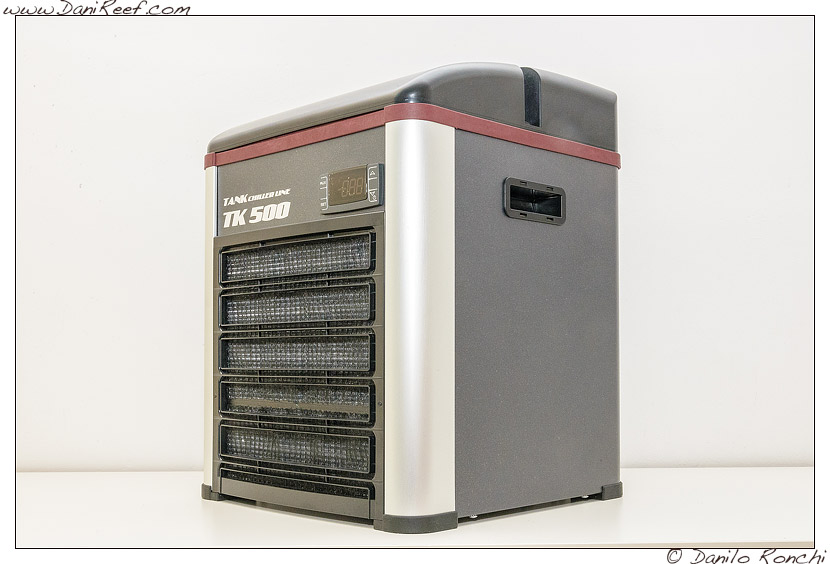
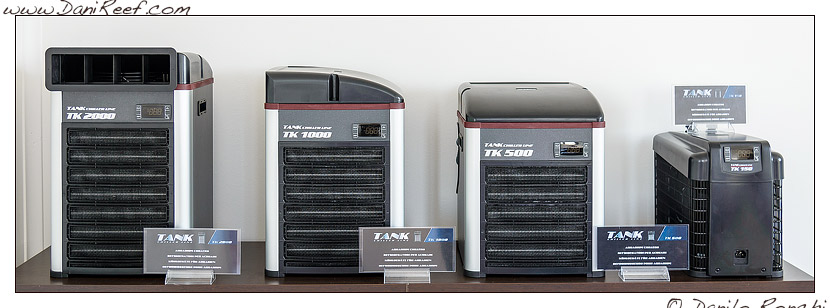
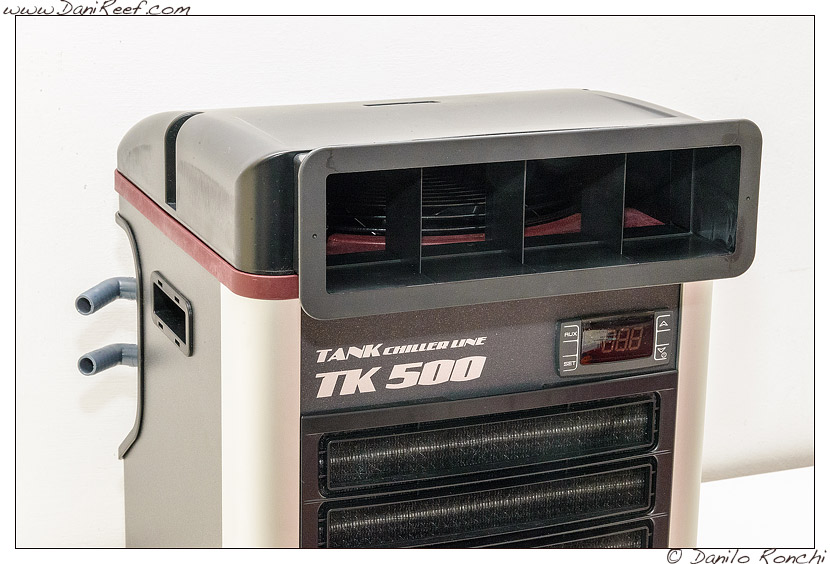
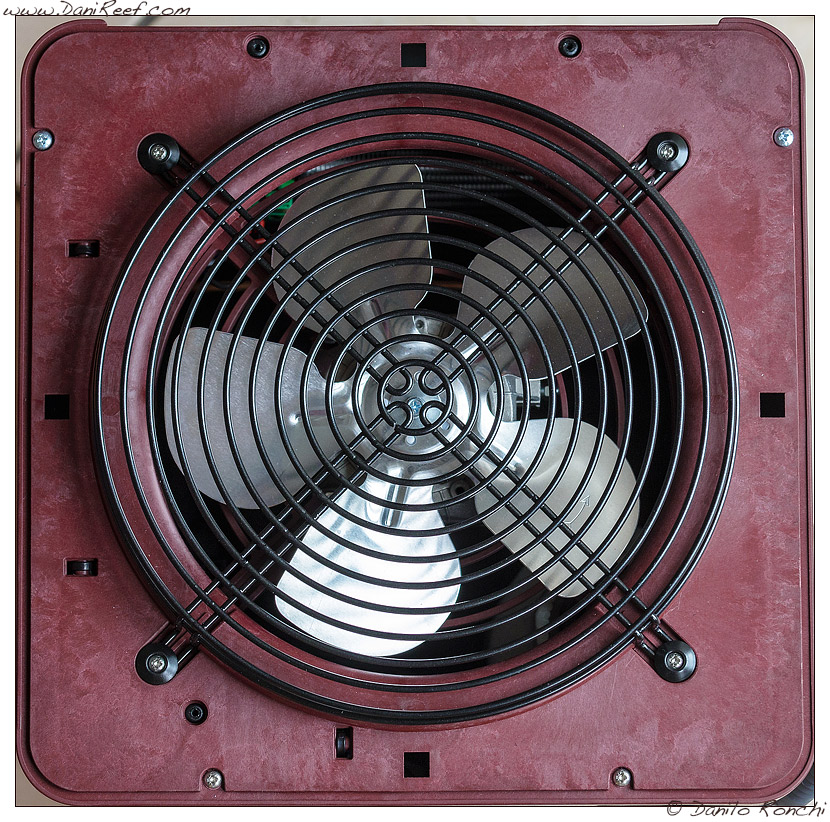
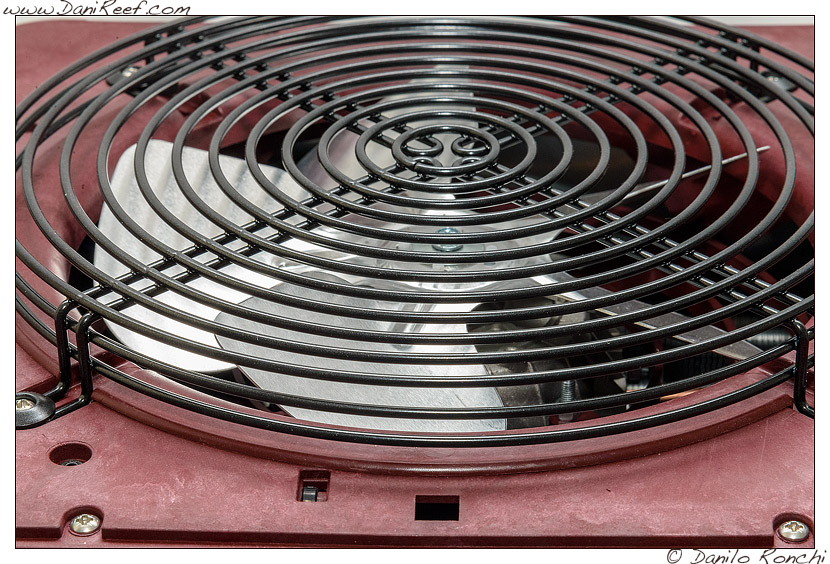
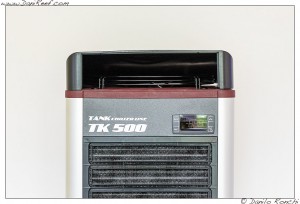

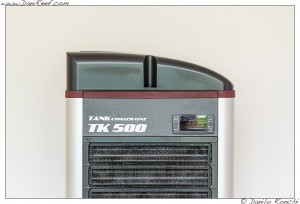
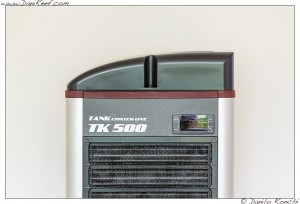

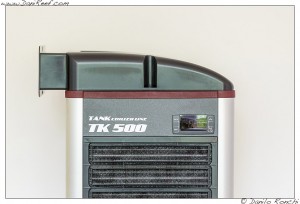
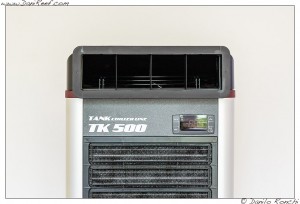
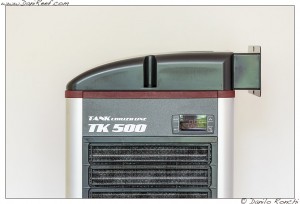
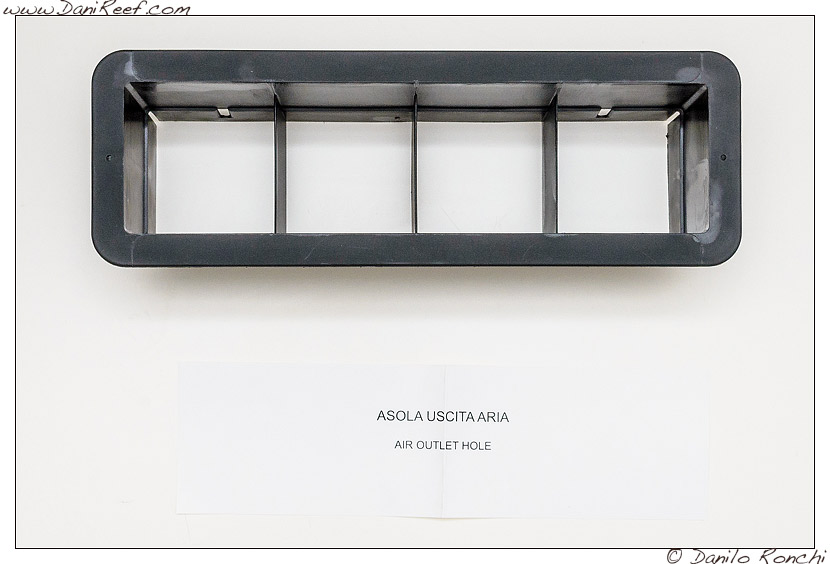
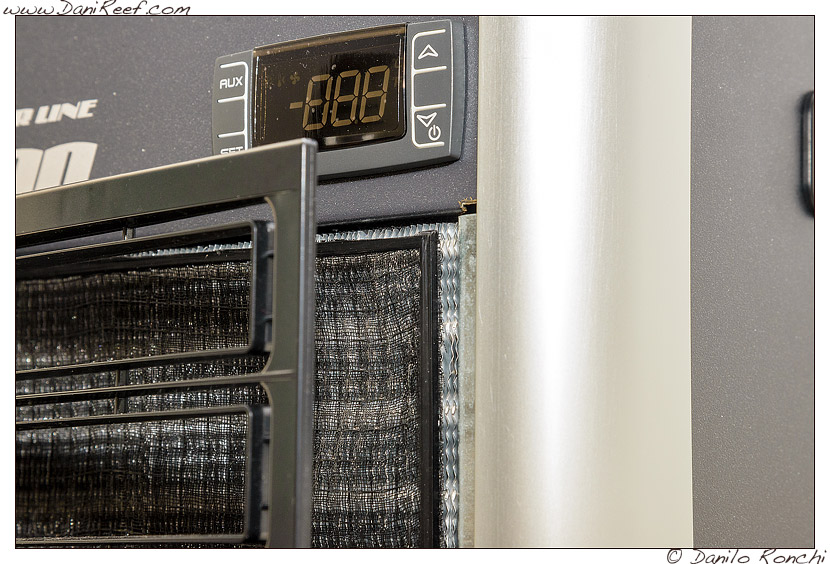
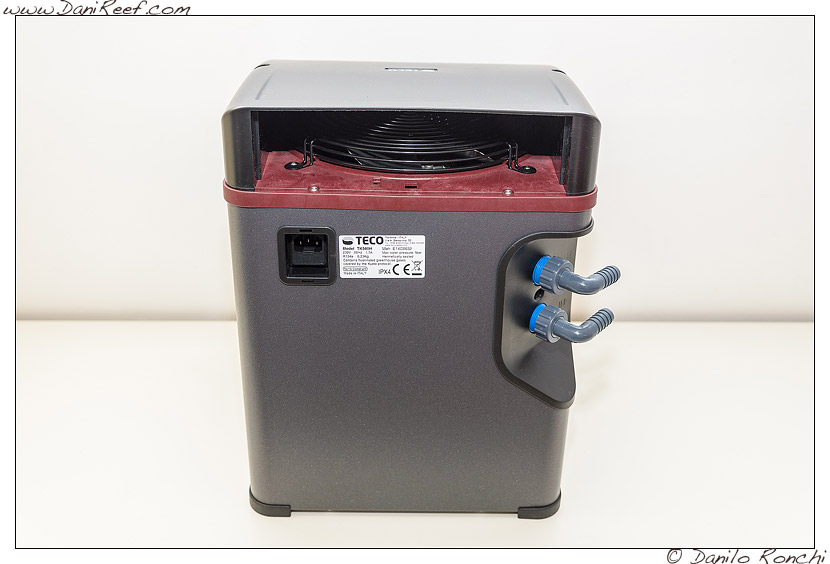
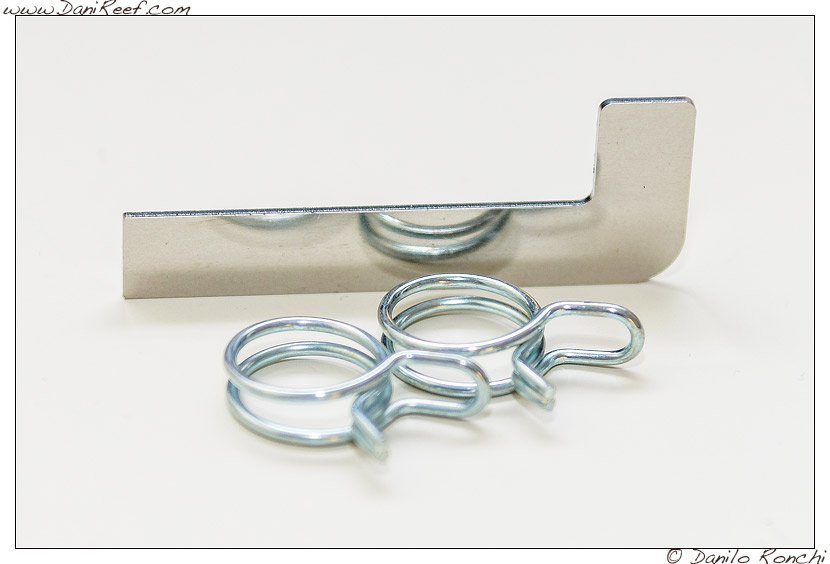
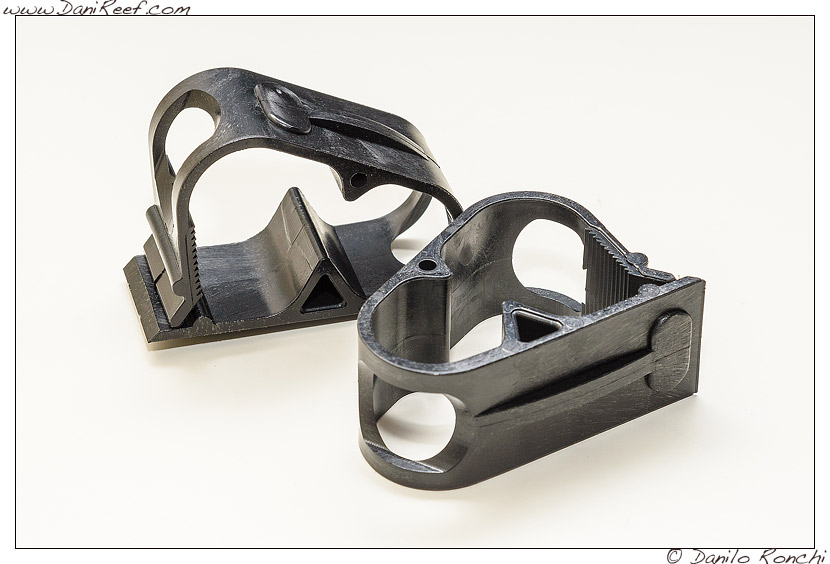
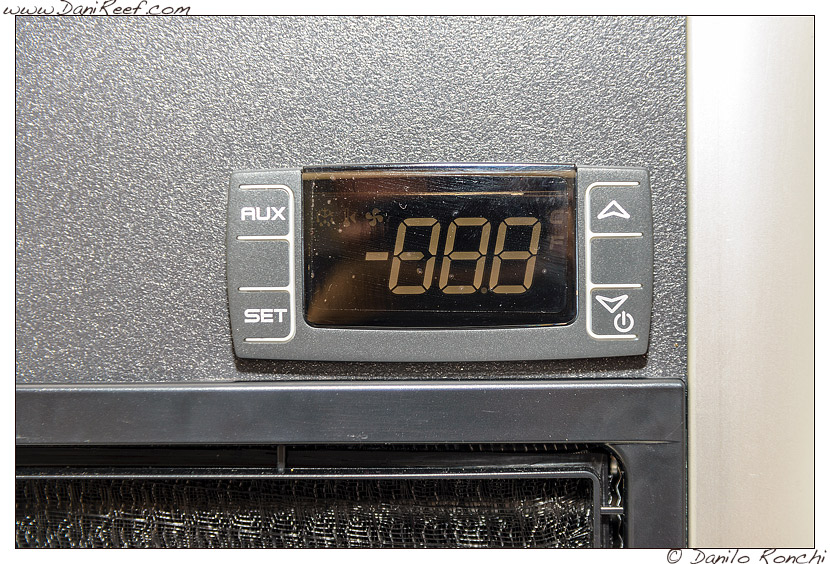

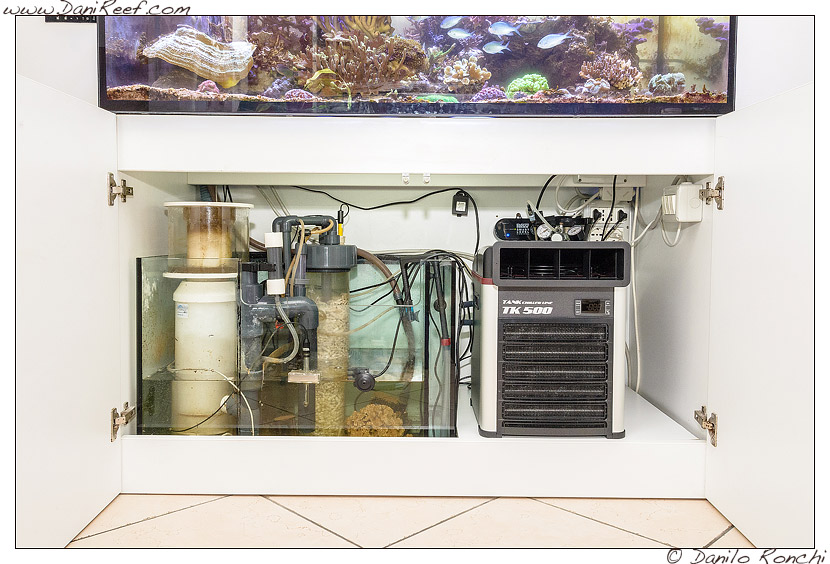
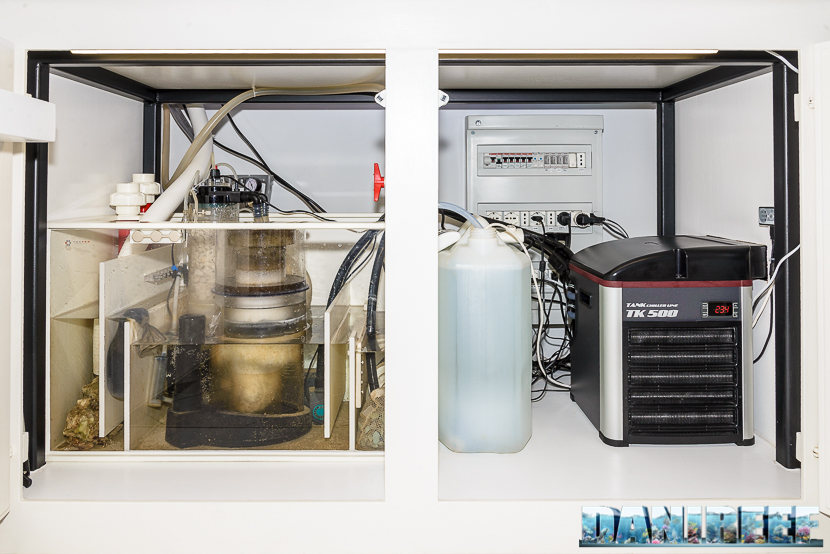
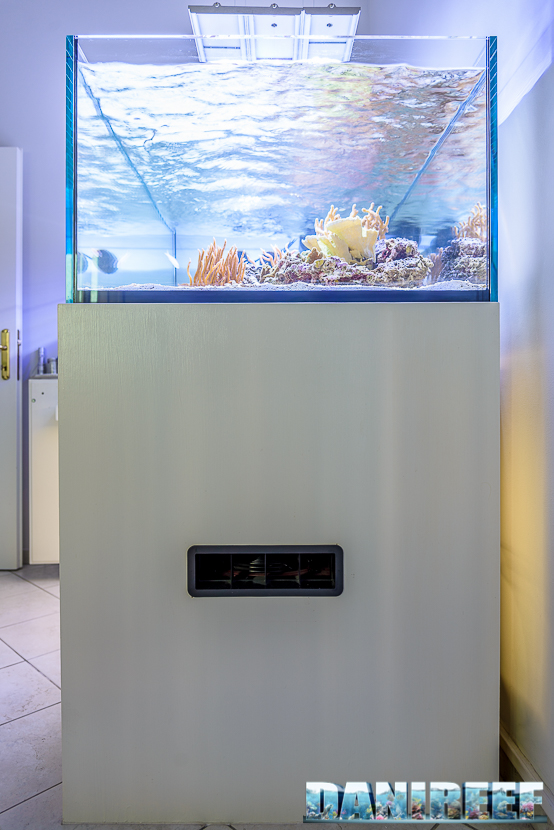
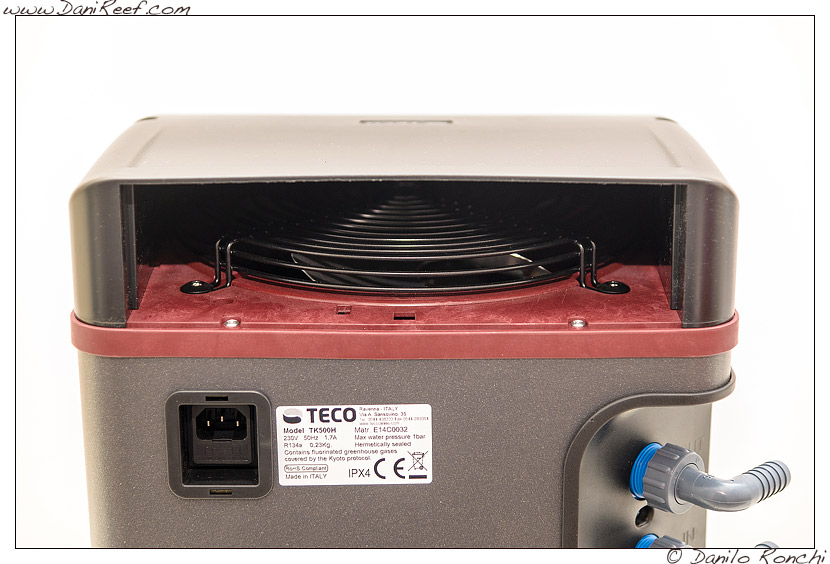

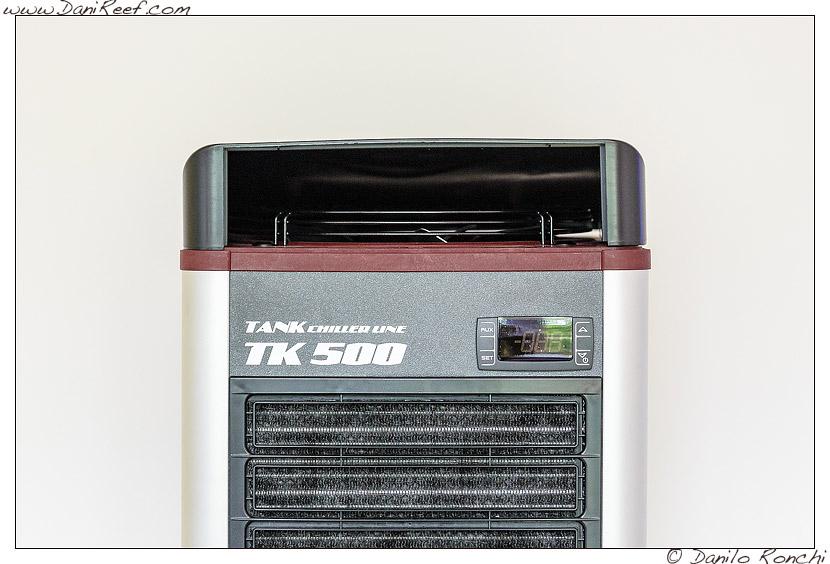
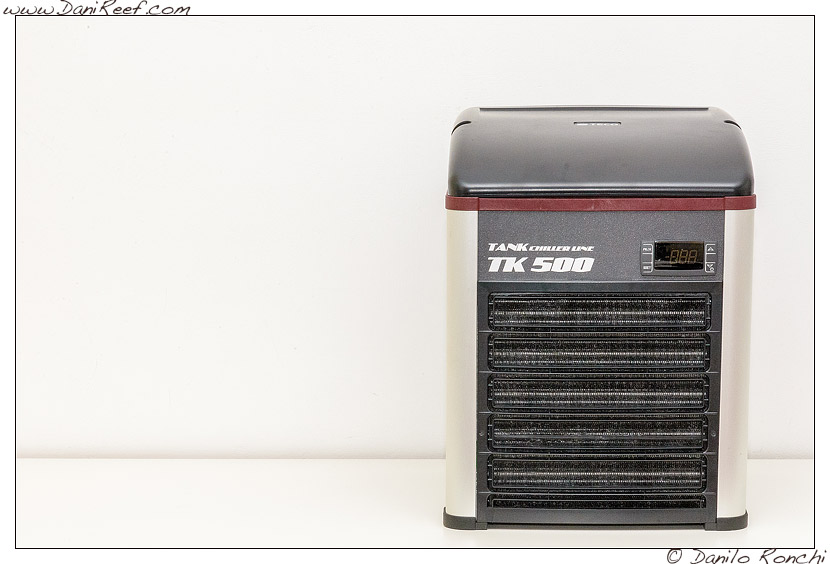
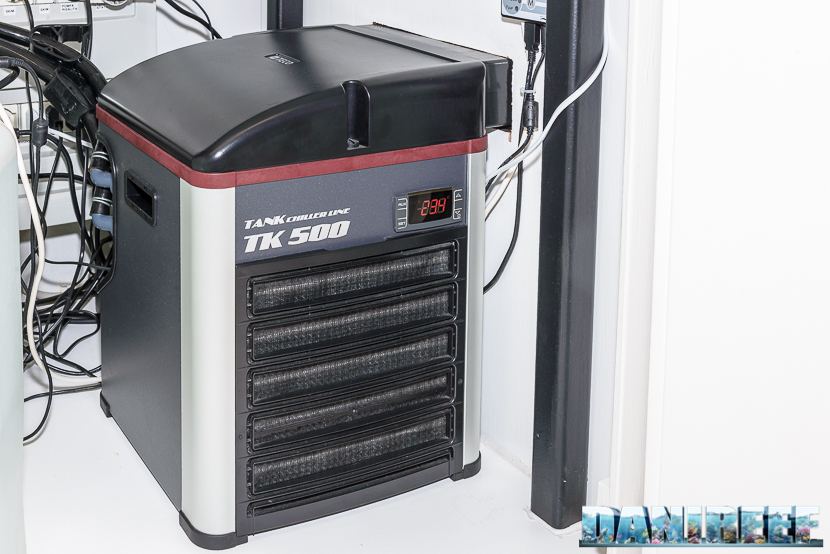





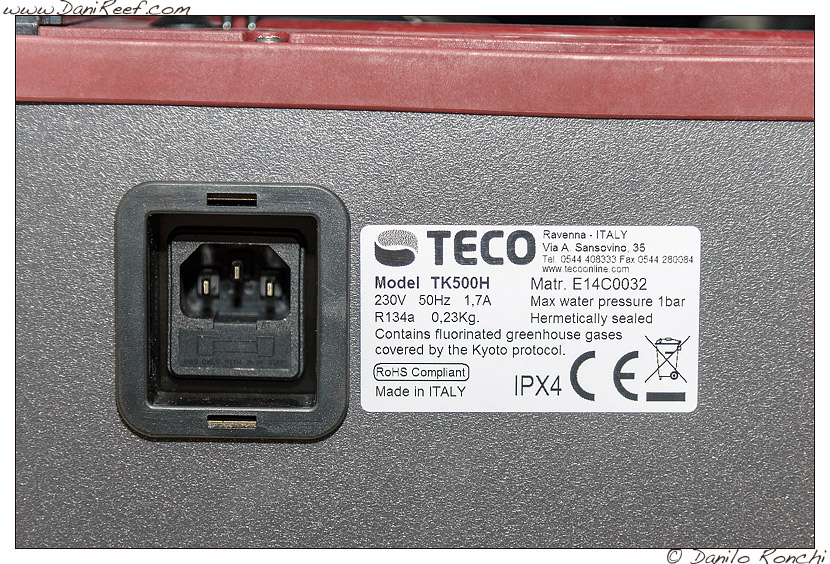
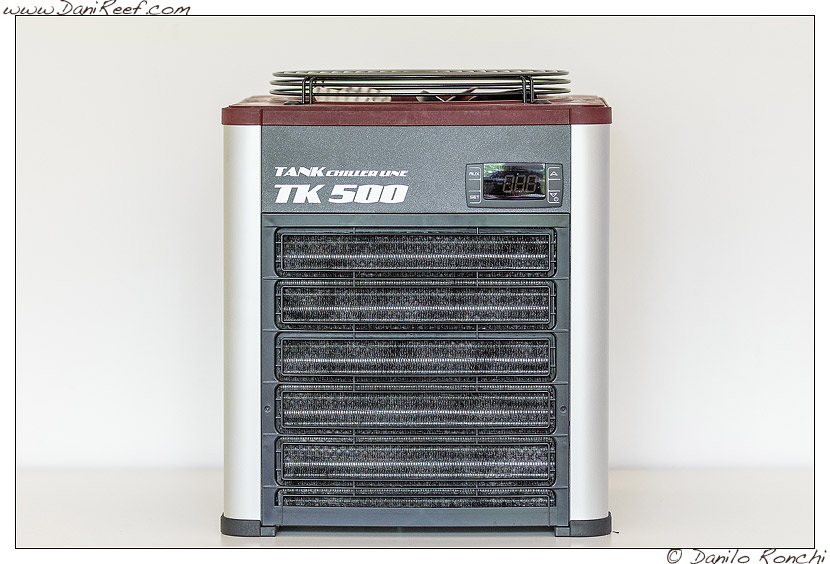
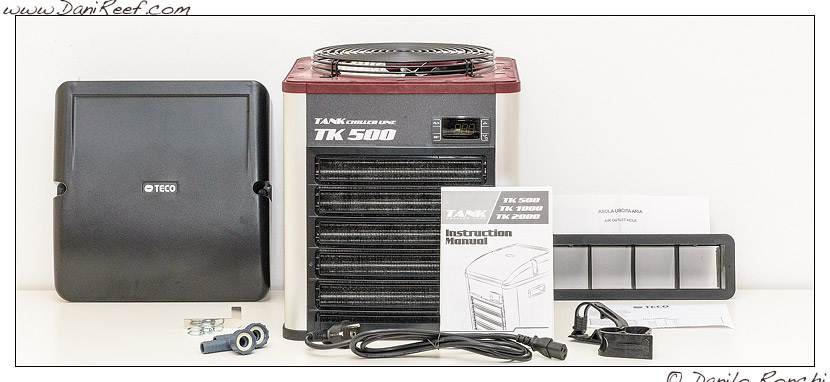
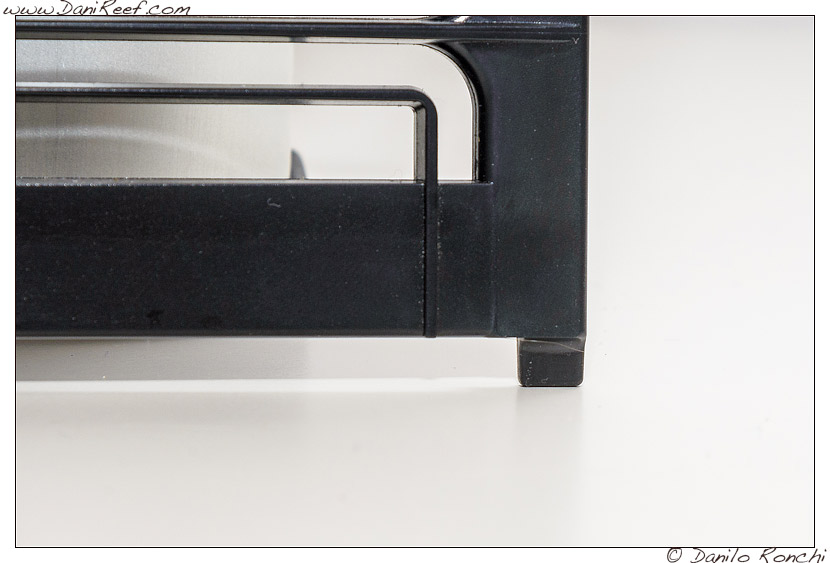
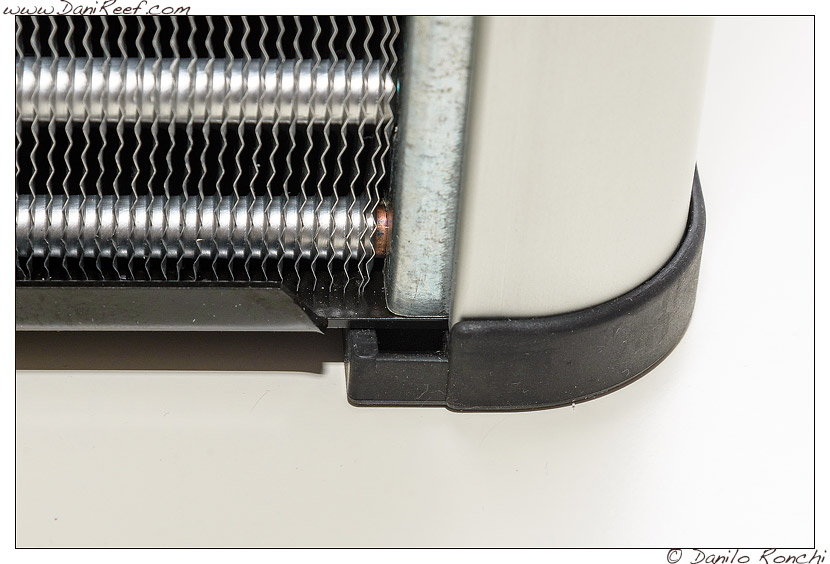
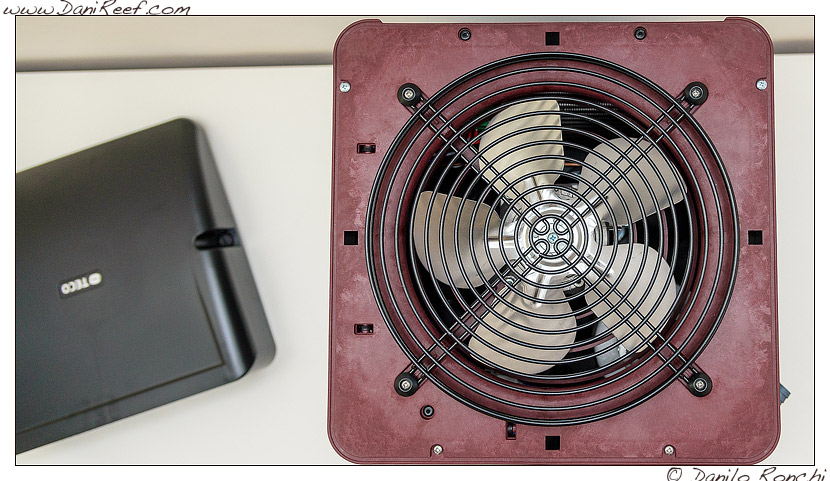
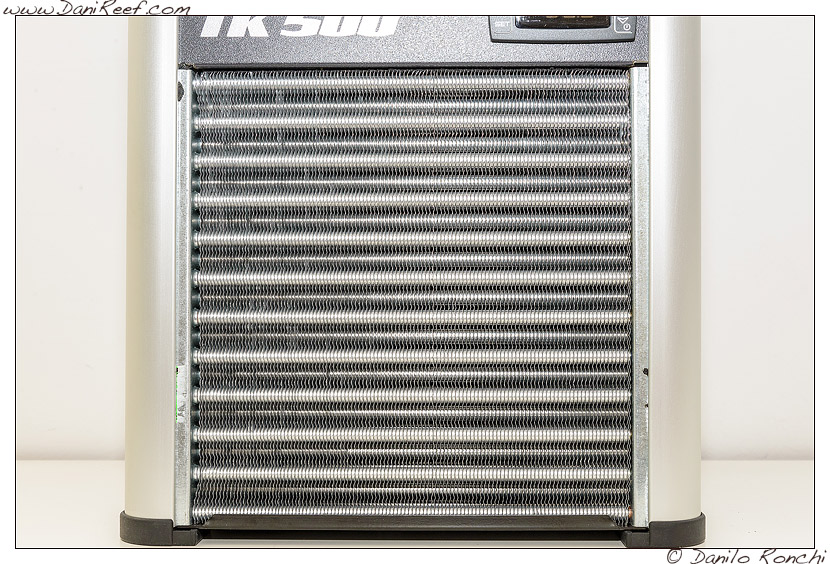









0 Comments